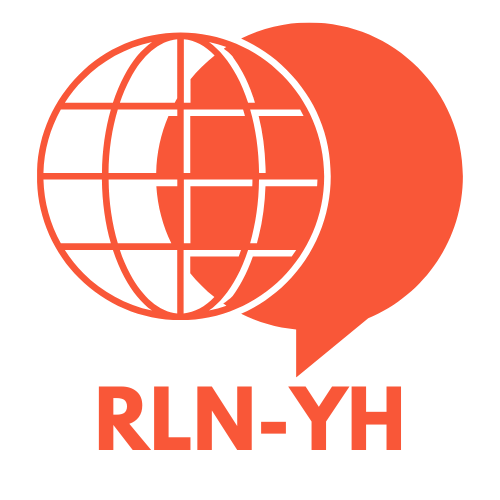Table of Contents
ToggleIn a world where your fridge might just know more about your snack cravings than you do, the Internet of Things (IoT) is revolutionizing everyday life. Imagine a home that anticipates your needs, a car that suggests the fastest route, and devices that chat with each other like old friends. Sounds like a sci-fi movie, right? Well, it’s reality now, and it’s packed with advantages that can make life smoother and more efficient.
From saving energy to enhancing convenience, the perks of IoT are as tempting as a slice of pizza on a Friday night. Businesses are jumping on the bandwagon too, reaping benefits that boost productivity and reduce costs. So, whether you’re a tech-savvy enthusiast or just looking to make life a little easier, understanding the advantages of IoT is the first step toward embracing this digital revolution.
Overview of Internet of Things
The Internet of Things (IoT) refers to a network of connected devices that communicate and exchange data. This technology integrates everyday objects, such as appliances and vehicles, with the internet for enhanced functionality. Devices can operate autonomously, allowing for smarter homes and improved efficiency in various sectors.
Smart homes exemplify the IoT concept. Sensors, cameras, and smart thermostats automate processes, optimizing comfort and energy usage. For instance, smart thermostats can learn user behaviors, adjusting temperatures to reduce energy consumption. Similarly, smart appliances streamline household tasks, enabling remote control through smartphones.
Businesses also see significant advantages from IoT implementation. Connected machinery in factories can monitor performance and predict maintenance needs, reducing downtime. Retailers utilize IoT for inventory management, tracking stock levels in real-time. Data analytics derived from connected devices contributes to informed decision-making and customer insights.
Healthcare benefits from IoT technology through remote patient monitoring. Wearable devices collect and transmit health data, allowing healthcare providers to track patient conditions continuously. This results in timely interventions and better patient outcomes, exemplifying IoT’s potential in improving quality of life.
Transportation systems are evolving with IoT applications. Connected vehicles offer real-time traffic updates, enhancing navigation and reducing travel times. Moreover, smart traffic lights manage congestion, promoting smoother traffic flow.
These examples demonstrate the broad impact of the Internet of Things across various sectors, highlighting its role in transforming everyday life and enhancing efficiency.
Key Advantages of Internet of Things

The Internet of Things (IoT) brings numerous benefits that significantly impact daily life and business operations.
Improved Efficiency
IoT enhances operational efficiency across various sectors. Connected devices automate routine tasks and streamline processes, reducing the time required for manual input. For example, smart thermostats optimize heating and cooling based on occupancy, leading to energy conservation. Automation of factory machinery minimizes downtime by predicting mechanical failures. Real-time data analytics contribute to faster decision-making, allowing businesses to respond swiftly to changes in demand or production. Overall, these improvements lead to increased productivity levels.
Enhanced Data Collection
Data collection becomes more sophisticated with IoT technology. Connected devices continuously gather and transmit data, enabling organizations to monitor performance and user behaviors. For instance, wearables track health metrics, providing valuable insights into patient health trends. Smart sensors in manufacturing deliver real-time information about equipment performance, allowing for proactive maintenance. Enhanced data availability facilitates better strategic planning and informed decision-making. Ultimately, organizations leverage this data to create better products and services, fostering innovation.
Cost Savings
Cost savings are a significant advantage of IoT implementation. Businesses experience lower operational costs through improved efficiency and reduced waste. Automated systems eliminate manual errors, cutting down on costs associated with rework. In addition, IoT devices such as smart meters help consumers track energy consumption, prompting energy-saving actions. Monitoring inventory levels in real-time prevents overstocking or stockouts, which can lead to financial losses. Organizations that utilize IoT technologies benefit from increased profitability while minimizing expenses.
Impact on Various Industries
The Internet of Things (IoT) significantly influences multiple industries, driving innovation and efficiency across the board.
Smart Homes
Smart homes utilize IoT for enhanced comfort and convenience. Devices connect seamlessly, allowing users to control lighting, heating, and security remotely. Smart thermostats learn user preferences, optimizing energy consumption while maintaining comfort. Sensors detect motion, enabling security systems to alert homeowners to unusual activities. Automated lighting adjusts based on occupancy, further reducing energy use. Together, these IoT innovations create more efficient and responsive living environments.
Healthcare
In healthcare, IoT devices transform patient care by enabling remote monitoring. Wearable technologies track vital signs, providing real-time health data to healthcare professionals. Continuous monitoring allows for early detection of potential medical issues, improving response times and outcomes. Integration of IoT leads to streamlined data sharing between providers and patients, enhancing communication. Smart devices also assist in medication management, ensuring adherence and improving patient safety. Overall, IoT fosters a more proactive and personalized healthcare experience.
Transportation
Transportation systems benefit greatly from IoT applications, enhancing navigation and safety. Smart traffic management employs real-time data to optimize signal timing, reducing congestion. Connected vehicles communicate with each other and infrastructure, improving road safety and decreasing accident rates. Public transit systems utilize IoT for real-time tracking and updates, enhancing the rider experience. Fleet management solutions leverage connected devices to monitor vehicle performance and optimize routes. These advancements contribute to a more efficient transportation network, benefiting both businesses and the public.
Challenges and Considerations
The Internet of Things (IoT) presents several challenges that require careful consideration, particularly concerning security and integration.
Security Concerns
Security remains a crucial issue in IoT. Vulnerable connected devices can become targets for cyberattacks. Data breaches may result in unauthorized access to sensitive information, leading to financial loss and reputation damage. Organizations must prioritize encryption and secure authentication protocols to safeguard user data. Regular software updates can mitigate risks, yet many devices lack the necessary support for such maintenance. Awareness of these vulnerabilities should drive users to adopt IoT solutions with thoughtful security measures in place.
Integration Issues
Integration poses another significant challenge for IoT systems. Diverse devices often operate on different platforms and standards, complicating interoperability. Users may face difficulties in managing multiple devices from various manufacturers. Achieving seamless communication among these devices requires robust frameworks and protocols. Solutions that emphasize compatibility and standardization can enhance user experience. Investments in unified platforms can streamline integration efforts, enabling users to enjoy the full potential of their interconnected environments.
The Internet of Things is reshaping how individuals and businesses operate in today’s digital landscape. With its ability to enhance convenience and efficiency the advantages are undeniable. From smart homes that optimize energy usage to healthcare innovations that improve patient care IoT is a driving force behind modern advancements.
As organizations and users embrace this technology the potential for increased productivity and cost savings continues to grow. However it’s essential to remain vigilant about security and integration challenges. By prioritizing these aspects the benefits of IoT can be fully realized paving the way for a smarter and more connected future.





